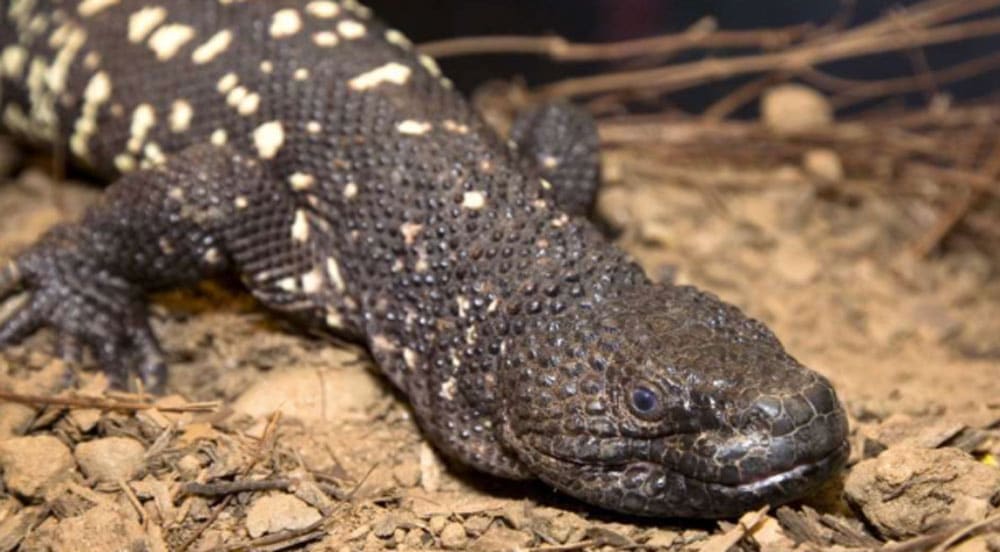Three male and eight female lizards will join an existing breeding colony at the Parque Zoológico Nacional La Aurora to help bolster wild populations of the venomous lizard.
Zoo Atlanta announced January 17 that 11 Guatemalan beaded lizards (Heloderma charlesbogerti) that hatched at the zoo have made it to the Parque Zoológico Nacional La Aurora in Guatemala to participate in a breeding colony. According to Zoo Atlanta’s press release detailing the announcement, three males and eight female lizards will join an existing breeding colony at the Parque Zoológico Nacional La Aurora to help bolster wild populations of the venomous lizard.
Scientists with the Universidad del Valle in Guatemala City and the La Aurora Zoo will introduce the offspring of these lizards into the country’s fully protected Reserva Natural Heloderma (Heloderma Reserve). The reserve has worked with local landowners who have agreed to protect the threatened lizards and work to restore native habitats of this species that exist outside the protected reserve.
Four Guatemalan Beaded Lizards Hatched At Oklahoma City Zoo
The Helodermas: Beaded Lizards And Gila Monsters
Zoo Atlanta has been working with this species since 2000, with the first group of lizards coming to the zoo via the University of Texas at Arlington. Since 2000, the zoo has successfully hatched 41 Guatemalan beaded lizards. The San Diego Zoo and the Oklahoma City Zoo and Botanical Garden have also successfully bred this species.
The Guatemalan beaded lizard is only known to occur in the Rio Motagua Valley in Guatemala. Closely related to the Gila monster, the lizard is a carnivore and feeds on young mammals, nesting birds, and snake, lizard and bird eggs. It is also known to eat the eggs of the endangered Guatemalan spiny-tailed iguana (Ctenosaura palearis). It is considered the rarest of the beaded lizards and with the estimated 200 to 500 lizards left in the wild, one of the most endangered lizards in the world. The species was first discovered in 1984 by D. Vasquez, an agricultural laborer in the Motagua Valley.
The lizard has suffered from the effects of habitat loss, illegal trade, and local Guatemalan myths that purport the lizard to have magical powers. The saliva and venom of the Guatemalan beaded lizard are used in a diabetes drug called Byetta. The lizard spends up to 70 percent of its life underground. The are considered a long-lived reptile. The adults at Zoo Atlanta are estimated to be more than 40 years old. The venom of this species is used entirely for self defense.



